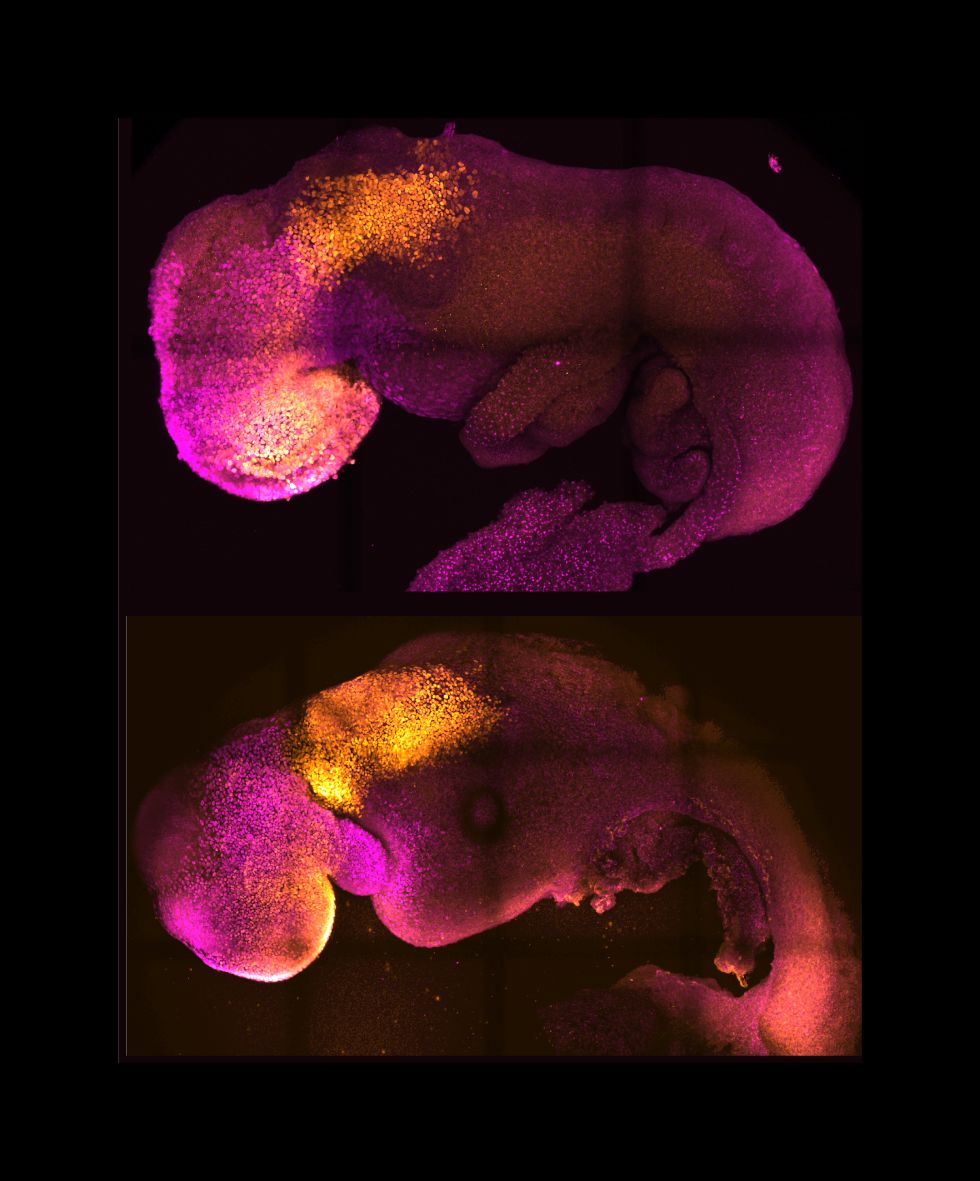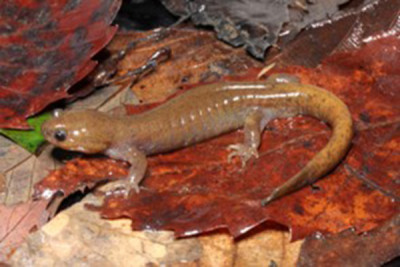ケンブリッジ大学の研究者たちは、マウスの幹細胞から、脳や心臓、その他すべての臓器の基礎を形成するモデル胚を作製した。 Researchers from the University of Cambridge have created model embryos from mouse stem cells that form a brain, a beating heart, and the foundations of all the other organs of the body – a new avenue for recreating the first stages of life.
2022-08-25 ケンブリッジ大学
 Natural (top) and synthetic (bottom) embryos side by side to show comparable brain and heart formation. Image credit: Amadei and Handford
Natural (top) and synthetic (bottom) embryos side by side to show comparable brain and heart formation. Image credit: Amadei and Handford
研究チームは、哺乳類の発生初期に見られる3種類の幹細胞を、相互作用が始まる地点まで誘導し、研究室内で自然のプロセスを模倣した。特定の遺伝子群の発現を誘導し、幹細胞の相互作用のための独自の環境を整えることで、研究者らは幹細胞同士を「対話」させることに成功した。
幹細胞は自己組織化し、心臓の鼓動や脳の基礎、そして胚が成長し、最初の数週間で栄養を得る卵黄嚢を持つまで、連続した発生段階を経て構造を作り上げたのである。他の人工胚とは異なり、ケンブリッジが開発したモデルは、前方部を含む脳全体が発達し始めるところまで到達した。
この成果は、なぜある胚が失敗し、他の胚が健康な妊娠に至るのかを理解するのに役立つという。さらに、この成果は、移植用ヒト人工臓器の修復や開発の指針として活用できる可能性がある。
<関連情報>
- https://www.cam.ac.uk/stories/model-embryo-from-stem-cells
- https://www.nature.com/articles/s41586-022-05246-3
原腸陥入から神経形成、器官形成まで完了した合成胚 Synthetic embryos complete gastrulation to neurulation and organogenesis
Gianluca Amadei,Charlotte E. Handford,Chengxiang Qiu,Joachim De Jonghe,Hannah Greenfeld,Martin Tran,Beth K. Martin,Dong-Yuan Chen,Alejandro Aguilera-Castrejon,Jacob H. Hanna,Michael Elowitz,Florian Hollfelder,Jay Shendure,David M. Glover & Magdalena Zernicka-Goetz
Nature Published:25 August 2022
DOI:https://doi.org/10.1038/s41586-022-05246-3
Abstract
Embryonic stem cells (ESC) can undergo many aspects of mammalian embryogenesis in vitro1–5, but their developmental potential is substantially extended by interactions with extraembryonic stem cells, including trophoblast stem cells (TSCs), extraembryonic endoderm stem cells (XEN), and inducible-XEN cells (iXEN)6–11. Here, we assembled stem-cell derived embryos in vitro from mouse ESCs, TSCs and iXEN cells and showed that they recapitulate whole natural mouse embryo development in utero to day 8.5. Our embryo model displays head-folds with defined forebrain and midbrain regions and develops a beating heart-like structure, a trunk comprising a neural tube and somites, a tail bud containing neuromesodermal progenitors, a gut tube, and primordial germ cells. This complete embryo model develops within an extra-embryonic yolk sac that initiates blood island development. Importantly, we demonstrate that the neurulating embryo model assembled from Pax6 knockout-ESCs aggregated with wild-type TSCs and iXENs recapitulates the ventral domain expansion of the neural tube that occurs in natural, ubiquitous Pax6 knockout embryos. Thus, these complete embryoids are a powerful in vitro model for dissecting the roles of diverse lineages and genes in development. Our results demonstrate the self-organization ability of embryonic and two types of extra-embryonic stem cells to reconstitute mammalian development through and beyond gastrulation to neurulation and early organogenesis.


